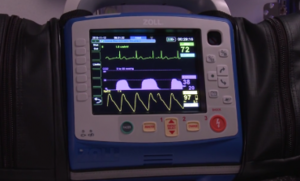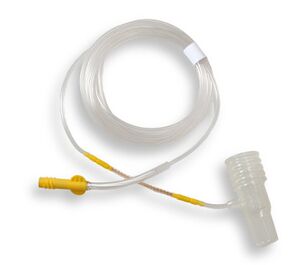Ventilations and End Tidal CO2
What are Capnography, Capnometry, and End Tidal CO2?
End tidal CO2 (ETCO2) is the amount of CO2 (carbon dioxide) that is being expelled from the lungs as we breathe out. It lets us know that not only is air going in and out of the body, but that gas exchange is happening in the lungs. It is an important indicator that the airway is properly placed and guides our ventilation rates.
Capnography and capnometry are the measurement of ETCO2. Capnography displays the data as a waveform and capnometry displays a numerical value. The waveform provides valuable data, but is really beyond our scope. Our focus will be on the numerical result.
Desired Ranges and How to Get There
When ventilating a patient we want ETCO2 readings in the range of 35-45 mmHg. We also want O2 saturation of 92% or higher. To change the ETCO2 we change the speed at which we bag. To change the SPO2 we change the flow rate of oxygen into the bag.
If the ETCO2 is **below 35 you need to bag more slowly**. If the ETCO2 is **above 45 you need to bag more quickly**. This might put you outside the normal range of 10-12 breaths/minute for an adult. Capnography/Capnometry is more sensitive and doesn't have the delays of pulse-oximetry.
The Equipment
The Zoll monitors display ETCO2 as a purple wave-form and numbers as shown in this image. The upper number is the ETCO2 value (38) and the lower number is the ventilation rate (20):
The sampling line is clear with yellow/orange connectors. The large diameter parts connect between the bag and mask or between the ET tube and mask. The smaller end connects to a sampling port on the monitor.
Additional Information:
For more information about what capnography measures and especially about the wave forms, see this video:
or read this article:

